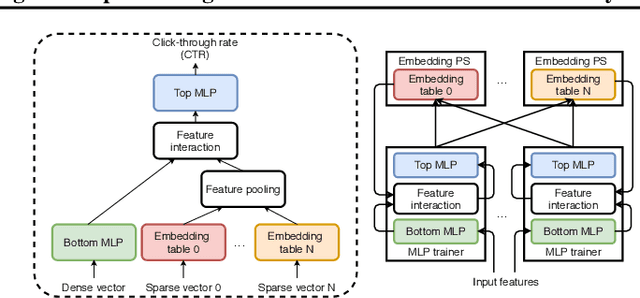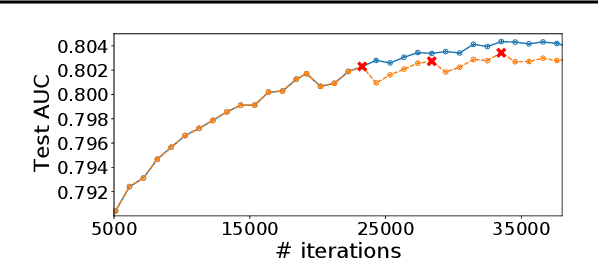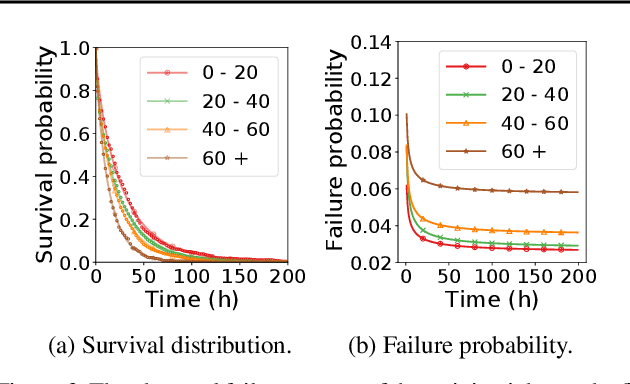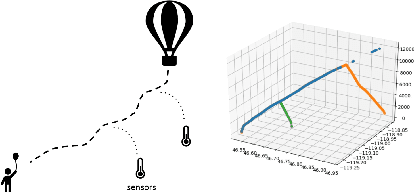Brandon Lucia
Nanosatellite Constellation and Ground Station Co-design for Low-Latency Critical Event Detection
Mar 03, 2025Abstract:Advancements in nanosatellite technology lead to more Earth-observation satellites in low-Earth orbit. We explore using nanosatellite constellations to achieve low-latency detection for time-critical events, such as forest fires, oil spills, and floods. The detection latency comprises three parts: capture, compute and transmission. Previous solutions reduce transmission latency, but we find that the bottleneck is capture latency, accounting for more than 90% of end-to-end latency. We present a measurement study on how various satellite and ground station design factors affect latency. We offer design guidance to operators on how to choose satellite orbital configurations and design an algorithm to choose ground station locations. For six use cases, our design guidance reduces end-to-end latency by 5.6 to 8.2 times compared to the existing system.
CPR: Understanding and Improving Failure Tolerant Training for Deep Learning Recommendation with Partial Recovery
Nov 05, 2020



Abstract:The paper proposes and optimizes a partial recovery training system, CPR, for recommendation models. CPR relaxes the consistency requirement by enabling non-failed nodes to proceed without loading checkpoints when a node fails during training, improving failure-related overheads. The paper is the first to the extent of our knowledge to perform a data-driven, in-depth analysis of applying partial recovery to recommendation models and identified a trade-off between accuracy and performance. Motivated by the analysis, we present CPR, a partial recovery training system that can reduce the training time and maintain the desired level of model accuracy by (1) estimating the benefit of partial recovery, (2) selecting an appropriate checkpoint saving interval, and (3) prioritizing to save updates of more frequently accessed parameters. Two variants of CPR, CPR-MFU and CPR-SSU, reduce the checkpoint-related overhead from 8.2-8.5% to 0.53-0.68% compared to full recovery, on a configuration emulating the failure pattern and overhead of a production-scale cluster. While reducing overhead significantly, CPR achieves model quality on par with the more expensive full recovery scheme, training the state-of-the-art recommendation model using Criteo's Ads CTR dataset. Our preliminary results also suggest that CPR can speed up training on a real production-scale cluster, without notably degrading the accuracy.
Enhancing Stratospheric Weather Analyses and Forecasts by Deploying Sensors from a Weather Balloon
Dec 04, 2019


Abstract:The ability to analyze and forecast stratospheric weather conditions is fundamental to addressing climate change. However, our capacity to collect data in the stratosphere is limited by sparsely deployed weather balloons. We propose a framework to collect stratospheric data by releasing a contrail of tiny sensor devices as a weather balloon ascends. The key machine learning challenges are determining when and how to deploy a finite collection of sensors to produce a useful data set. We decide when to release sensors by modeling the deviation of a forecast from actual stratospheric conditions as a Gaussian process. We then implement a novel hardware system that is capable of optimally releasing sensors from a rising weather balloon. We show that this data engineering framework is effective through real weather balloon flights, as well as simulations.
 Add to Chrome
Add to Chrome Add to Firefox
Add to Firefox Add to Edge
Add to Edge